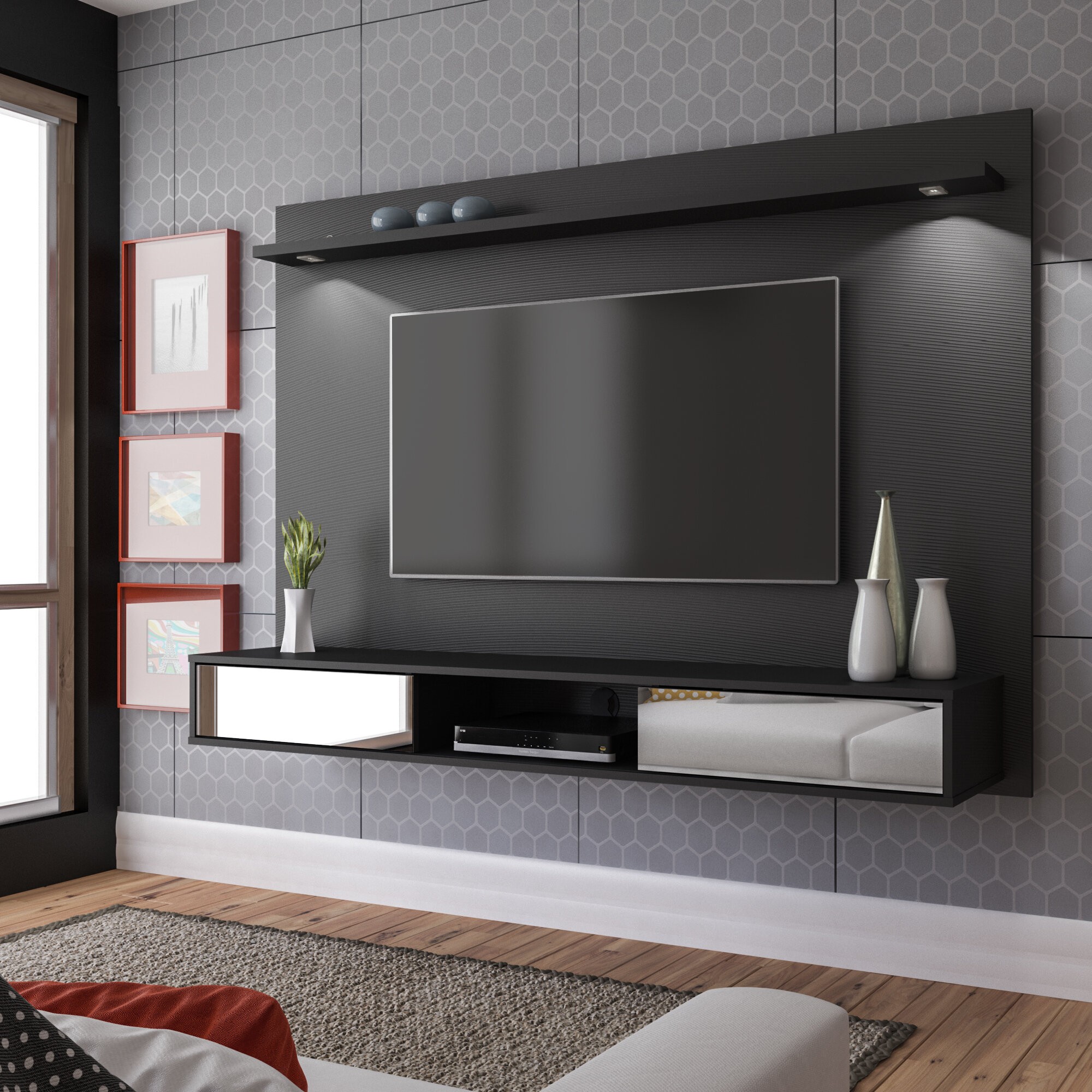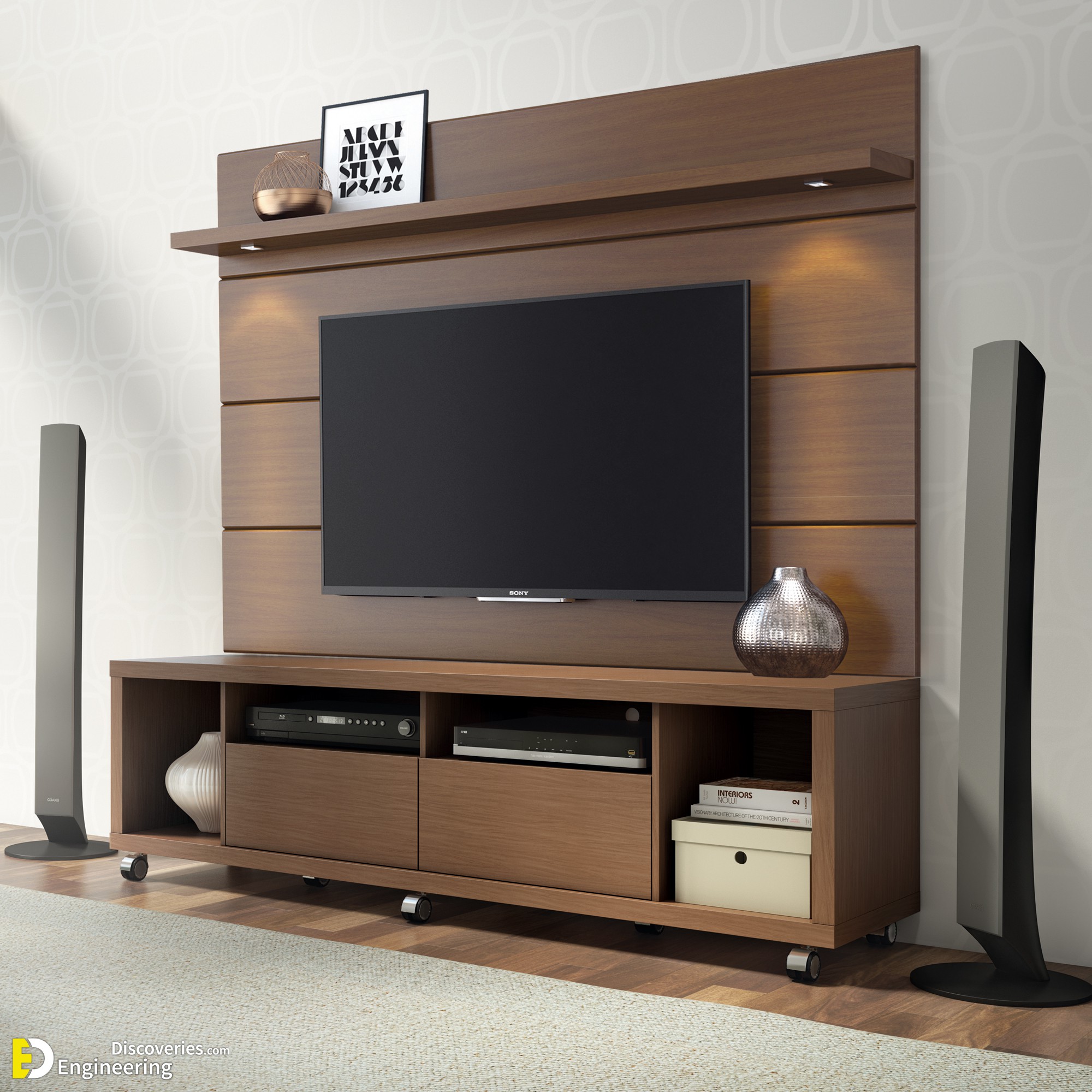Floating LED TV Cabinet Design & Functionality

Floating LED TV cabinets offer a modern and stylish solution for displaying your television while maximizing space and creating a visually appealing focal point in your living room. These cabinets are designed to appear as if they are suspended in mid-air, giving the illusion of a floating television.
Design Trends
Floating TV cabinet design is influenced by various interior design trends. Here are some of the most popular styles:
- Minimalist: Minimalist floating TV cabinets are characterized by clean lines, simple forms, and a lack of ornamentation. They often feature open shelves or a single, sleek base. These cabinets are ideal for creating a modern and uncluttered look.
- Modern: Modern floating TV cabinets incorporate contemporary materials like metal, glass, and acrylic. They may feature geometric shapes, asymmetrical designs, and bold color combinations. These cabinets add a touch of sophistication and elegance to any living room.
- Industrial: Industrial floating TV cabinets embrace a raw and unfinished aesthetic. They often feature exposed metal, reclaimed wood, and distressed finishes. These cabinets create a rugged and edgy look, perfect for loft-style apartments or industrial-themed spaces.
- Traditional: Traditional floating TV cabinets are inspired by classic design elements. They often feature ornate details, intricate carvings, and warm wood finishes. These cabinets add a touch of timelessness and sophistication to a room.
Material Options
Floating TV cabinets are crafted from a variety of materials, each offering unique aesthetic and functional properties:
- Wood: Wood is a popular choice for floating TV cabinets due to its natural beauty, durability, and versatility. It can be stained or painted to match any decor. Popular wood choices include oak, walnut, maple, and cherry.
- Metal: Metal floating TV cabinets offer a sleek and modern look. They can be made from steel, aluminum, or iron. Metal cabinets are often powder-coated or painted in various colors to complement different interior styles.
- Glass: Glass floating TV cabinets create a contemporary and airy feel. They are often combined with metal or wood for structural support. Glass cabinets are available in clear, frosted, or tinted finishes.
- Acrylic: Acrylic floating TV cabinets are lightweight, durable, and available in a wide range of colors. They offer a modern and transparent look, allowing for a seamless integration with the surrounding decor.
Storage Solutions
Floating TV cabinets offer a variety of storage options to keep your living room organized and clutter-free:
- Shelves: Open shelves provide easy access to electronics, books, and decorative items. They can be used to display your favorite items or to conceal cables and wires.
- Drawers: Drawers offer hidden storage for remotes, DVDs, and other items. They can be equipped with soft-close mechanisms for quiet operation.
- Hidden Compartments: Some floating TV cabinets feature hidden compartments behind panels or doors. These compartments are ideal for storing valuables or unsightly items.
Cable Management
Floating TV cabinets often come with built-in cable management systems to keep wires and cables organized and hidden:
- Cable Channels: Channels integrated into the cabinet’s structure provide a discreet way to route cables behind the TV.
- Cable Trays: Removable trays attached to the underside of the cabinet can hold and organize cables.
- Cable Ties: Cable ties can be used to bundle and secure cables within the cabinet’s channels or trays.
Installation & Placement Considerations

Installing a floating TV cabinet is a great way to enhance the look and functionality of your living room. But before you start drilling holes, there are some important considerations to keep in mind. This includes ensuring your walls are suitable for the weight of the cabinet, following proper installation steps, and choosing the best placement for optimal viewing and room layout.
Wall Type Compatibility
The type of wall you have will determine the installation method and the weight it can support. Here’s a breakdown of common wall types and their suitability for floating TV cabinets:
- Drywall: Drywall is a common wall material in many homes. It’s generally lightweight and can be easily drilled into. However, it’s crucial to use the right anchors to ensure the cabinet is securely mounted.
- Concrete: Concrete walls are sturdy and can support heavy loads. Installing a floating TV cabinet on a concrete wall may require specialized tools and techniques, such as using concrete anchors or drilling pilot holes.
- Brick: Brick walls are also strong and can handle significant weight. Installing a floating TV cabinet on a brick wall might involve using specialized anchors designed for brick.
Installation Process
The installation process for a floating TV cabinet typically involves the following steps:
- Determine the Mounting Location: Choose the desired location for your cabinet, ensuring it’s level and within reach of electrical outlets.
- Mark the Wall: Use a level to mark the mounting points on the wall, ensuring they are aligned with the cabinet’s mounting holes.
- Install Mounting Brackets: Drill pilot holes at the marked locations and install the appropriate anchors based on your wall type. Secure the mounting brackets to the wall using screws or bolts.
- Attach the Cabinet: Hang the cabinet onto the mounting brackets, ensuring it’s securely attached.
- Install the TV: Once the cabinet is mounted, attach the TV to the cabinet’s built-in mount.
Placement Tips, Floating led tv cabinet
Choosing the right placement for your floating TV cabinet is crucial for optimal viewing and room aesthetics:
- Viewing Angle: Position the cabinet at a comfortable viewing distance and angle. Aim for a viewing angle of approximately 30-40 degrees, ensuring everyone in the room can see the screen clearly.
- Room Layout: Consider the flow of traffic in your living room and ensure the cabinet doesn’t obstruct walkways or doorways.
- Focal Point: Place the cabinet as the focal point of the room, drawing attention to the TV and creating a visually appealing center.
Safety Precautions
Safety should be a top priority when installing and using a floating TV cabinet:
- Weight Capacity: Ensure the cabinet’s weight capacity is sufficient to support the weight of your TV and any additional accessories. Overloading the cabinet can lead to instability and potential damage.
- Proper Mounting: Use the right anchors and screws for your wall type and the weight of the cabinet. Ensure the mounting brackets are securely attached to the wall to prevent the cabinet from falling.
- Cable Management: Manage cables neatly and securely to avoid tripping hazards and maintain a clean look.
Floating LED TV Cabinet Benefits & Drawbacks

Floating LED TV cabinets are a popular choice for modern homes, offering a sleek and contemporary look while maximizing space. However, like any furniture piece, they come with advantages and disadvantages that you should consider before making a purchase.
Advantages
Floating TV cabinets offer several advantages, making them a desirable choice for many homeowners.
- Modern Aesthetic: Floating cabinets create a clean and contemporary look, enhancing the visual appeal of your living room. They seamlessly integrate with minimalist designs and add a touch of sophistication to the space.
- Space-Saving Design: Floating cabinets, by eliminating the need for legs, maximize floor space, making the room feel more open and spacious. This is especially beneficial in smaller living rooms where every inch counts.
- Ease of Access: The floating design allows for easy access to the TV and other components, making it convenient to connect cables and devices. The open space beneath the cabinet also provides easy access for cleaning and maintenance.
Disadvantages
While floating TV cabinets offer numerous advantages, they also come with some drawbacks.
- Installation Complexity: Installing a floating TV cabinet can be more complex than setting up a traditional TV stand, requiring proper wall mounting and potentially professional assistance.
- Limited Storage Capacity: Floating cabinets typically offer less storage space compared to traditional TV stands. This can be a concern if you need ample space for media components, gaming consoles, or other accessories.
- Possible Stability Concerns: Floating cabinets rely on secure wall mounting, which can be a concern for heavier TVs or in homes with weak walls. Improper installation can lead to instability and potential damage.
Cost & Value
The cost of floating TV cabinets can vary widely depending on factors such as materials, size, features, and brand reputation.
- Materials: Cabinets made from high-quality materials like solid wood or metal will generally be more expensive than those made from particleboard or MDF.
- Features: Cabinets with additional features, such as integrated lighting, cable management systems, or adjustable shelves, will likely cost more.
- Brand Reputation: Well-known brands with a strong reputation for quality and craftsmanship often command higher prices.
Compared to traditional TV stands, floating cabinets can be more expensive, but they offer a unique aesthetic and space-saving design that can add value to your home.
Maintenance & Durability
Floating TV cabinets, like any furniture piece, require regular maintenance to ensure their longevity and functionality.
- Dusting: Regular dusting is essential to keep the cabinet clean and free of dust buildup.
- Cleaning: Use a mild cleaning solution and a soft cloth to clean the cabinet surface, avoiding harsh chemicals or abrasive materials.
- Wall Mounting: Ensure the wall mounting is secure and stable to prevent any potential accidents or damage.
With proper care and maintenance, floating TV cabinets can last for many years, providing a stylish and functional addition to your living room.
A floating LED TV cabinet can be a stylish and functional addition to any room, including a dedicated fan space. For those passionate about the Indianapolis Colts, incorporating team colors and memorabilia into the design can create a truly immersive experience.
For inspiration on how to achieve this, check out these Indianapolis Colts bedroom ideas , which showcase creative ways to display team pride. The sleek lines and modern aesthetic of a floating LED TV cabinet can seamlessly blend with the bold and vibrant elements of Colts décor, resulting in a space that is both visually appealing and deeply personal.
A floating LED TV cabinet offers a sleek, contemporary look, elevating the visual appeal of your living space. When considering the overall design, tv cabinet design for hall plays a crucial role in harmonizing the aesthetic. Floating cabinets, with their minimalist design, seamlessly integrate with various hall decor styles, creating a visually striking focal point for your television and entertainment system.